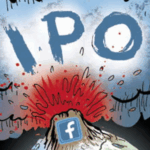The lack of a standard measurement protocol has been an issue for the podcast industry for years.
When podcasts are streamed, only the owner of a podcast player app knows how long a person listened to an episode, where they skipped and stopped in that episode or whether they heard an ad. That makes it difficult to sell podcasts to brand advertisers, who want to apply the granular metrics they get in digital to their podcast buys.
“The reason there are still questions about measurement is because advertisers aren’t comparing apples to apples, or even apples to zucchinis,” said Lex Friedman, chief revenue officer at Midroll Media, at the RAIN Podcast Business Summit in New York City on Thursday.
Last year, Apple opened analytics to podcast publishers that show listener behavior in aggregate for content consumed on its app. Given more than half of podcast listening happens through Apple, that transparency adds more clarity to listener habits.
But it’s still not enough for brands, who want standardized measurement and the ability to buy on impressions, as they do with the rest of their digital buys. Here are three measurement issues still plaguing the podcast industry today.
- Different download windows
A peculiarity in how Apple’s player downloads podcasts gives some publishers the chance to juice their download metrics.
Apple’s player downloads each show in chunks, making multiple requests to the server for a single show. Some publishers take advantage of that by using just a five-minute window to count a request as a new download.
Say Apple’s player downloads part of a show, which counts as one download. Five minutes later, though, it downloads another part of that same show. A publisher using a five-minute window will count that as a separate download, even though it’s not.
That practice is why the podcast industry needs a standard time window that dictates when server requests can count as new downloads, Friedman said.
“Everyone knows that five minutes is an inflated download number,” he said. “The download problem can be solved by making sure everyone on the buy side is educated on what to ask for.”
But while big publishers are moving away from the five-minute download window, there’s still a lack of consistency across the board. Midroll uses a 60-minute window, but NPR uses a two-hour window. The IAB is working on setting a standard for a 24-hour download window.
“Advertisers are just getting smart enough to ask: What is the download measurement window?” Friedman said.
- There’s no way to measure an impression
While the download is the best metric the podcast industry has today, it doesn’t give brands the opportunity to buy on measurable impressions.
“The idea of an impression is still nowhere near working for podcasts,” said Jonathan Eccles, director of product management at Pandora. “For direct response it works great, but for brands, the problem is so far from being solved.”
While Apple’s analytics help publishers know whether a podcast was played after being downloaded, they don’t give buyers the ability to measure impressions.
Advertisers don’t trust that a person heard an ad just because they started a podcast, Eccles said. “They trust, did the ad server serve the impression?”
Friedman, however, doesn’t think the inability to count impressions is a huge issue. Direct-response advertisers proved podcast advertising works because they continue to come back and spend more.
Squarespace, for example, spends $12 million each year on podcast advertising and sees a 2.5x ROI, said Ilyas Frenkel, formerly the growth manager at Squarespace. [Update 3/27: a current Squarespace spokesperson said this figure is inaccurate but declined to provide an alternate figure.]
Plus, Apple’s data shows that 85% of listeners listen to an entire episode, meaning most advertisers can infer that a listen translates into an impression, Friedman said.
“Direct response proved that people are clearly listening,” he said.
Still, the podcast market is small with experimental budgets, so it will be difficult to persuade big brands to move significant budgets to podcasting without impression-level measurement, Eccles said.
- There’s no standard for measuring a listen
While the IAB and MRC are working on audibility standards for the digital audio industry, most podcasters still haven’t adopted a common way to measure a listen. That makes it difficult for brands to allocate real budgets to podcasts, Eccles said.
“Advertisers currently think of podcasts as a very special, buyable unit,” he said. “But when they think of overall spend, [they want to see] deduplicated reach and frequency across podcasts, audio and TV. That’s where guidelines will help a lot.”
NPR is trying to create a listening standard through its remote audio data (RAD) protocol, which inserts a URL into a podcast MP3 file that lets players insert “listening events” that ping the server when a person gets through a significant point in the show, such as a sponsorship message. Today, RAD is only used in the NPR One podcast app, but the broadcaster wants all podcast publishers to adopt it as a standard, said Joel Sucherman, who heads up digital products at NPR.
“NPR One is a piece of the listening that happens for NPR podcasts, but it happens on all types of platforms,” he said. “As an industry, we need a collaborative, voluntary standard that we can all agree upon.”
But it’s difficult to adopt an industrywide measurement standard without support from Apple, given the amount of listening that occurs on its platform, Midroll’s Friedman said.
“If Apple doesn’t adopt it, it doesn’t matter for podcasting,” he said. “I would love to be optimistic that we can get all these tracking technologies and know exactly if an ad was heard, but until and unless Apple adds those technologies, it doesn’t really matter.”
Until a standard is adopted, brands can be comforted by the fact that listener behavior stays consistent across apps, he added.
“If everybody had different listening behaviors, that’d be concerning to me,” he said. “But the fact that you see very similar completion rates and low skipping rates on an app-by-app basis, people are using the app they prefer but listening habits are the same.”
But for brand CMOs, that kind of inference-based measurement won’t cut it for long, Eccles said.
“CMOs have to justify ROI across every campaign,” he said. “We need to find the way to prove it every time for these buyers.”















